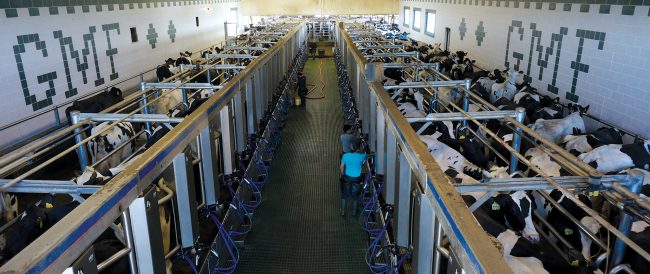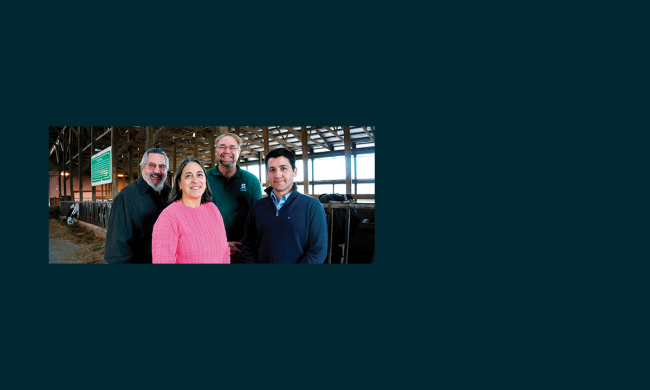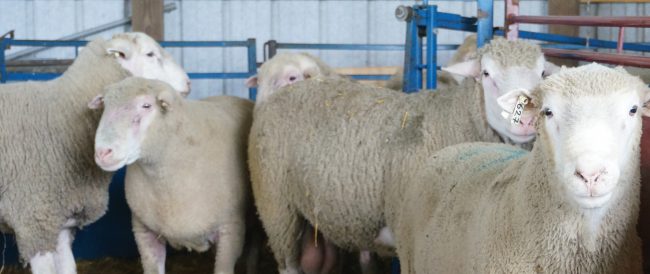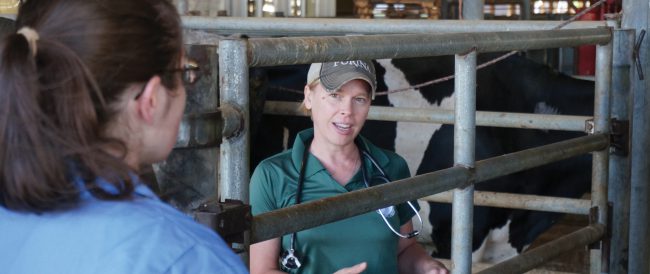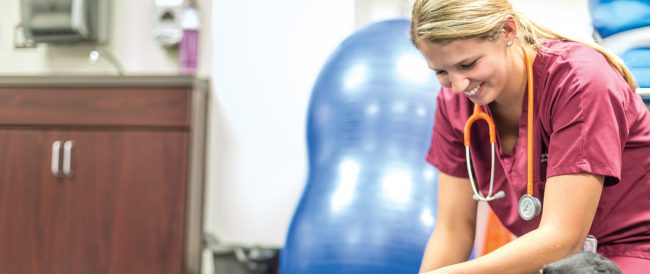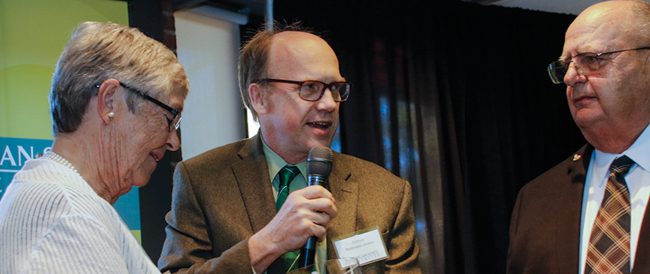 Read More
Read More
This summer, the MSU College of Veterinary Medicine welcomed a new chair to the Department of Pathobiology and Diagnostic Investigation. Dr. Srinand Sreevatsan came to MSU from the University of Minnesota, where he was a professor of infectious disease at the Veterinary Population Medicine Department and director of Graduate Studies. His research focuses on the pathobiology and molecular evolution of several zoonotic pathogens, especially mycobacteria and influenza.
“I’ve dedicated my scientific career to zoonotic disease investigations at the cellular and molecular level. My focus has been on bovine tuberculosis and influenza.”
— Dr. Srinand Sreevatsan
Sreevatsan joins the ranks of the College’s top-tier researchers that are focused on the One Health initiative; they work toward improving the health and safety of food products, livestock, humans, and the environment.
“Dr. Sreevatsan’s research, bridging basic understanding of microbial biology with detection and treatment methods, is especially valuable as we continue to learn about the consequences that antibiotics, farm management practices, waste disposal, and other factors can have on our world,” says Dr. Vilma Yuzbasiyan-Gurkan, associate dean for Research and Graduate Studies. “As we continue to innovate and produce novel diagnostics, therapies, and practices, we can effect change where our world most needs it.”
Bovine Tuberculosis
In developed countries, bovine tuberculosis (bTB) is detected and destroyed before food products make it into the human food chain; it is detected in beef cows at slaughter and pasteurization kills it in milk. But bTB passed to deer and other free-ranging mammals in nature can be passed back to domestic cow populations, putting humans who work with the livestock at risk; humans consuming infected food products also are at risk.
Sreevatsan’s research of bTB focuses on interspecies transmission, usually between wild and domestic animals and domestic animals and humans. His studies have focused on locations ranging from China, Thailand, Uganda, and Brazil, specifically in pastoral settings.
“We’ve developed tools to identify proteomic evidence of mycobacterial peptides, and we’re able to apply this data as we examine cattle and deer populations, which are the most concerning reservoirs for transmission events in the United States,” says Sreevatsan.
To address bTB in the States, Sreevatsan and his team are developing a nanoparticle-based sub-unit bacterial vaccine to immunize deer orally and stimulate local mucosal immunity.
“Our goal is to lessen the prevalence of tuberculosis in the wild, thereby affecting its transmission to domestic cattle populations,” says Sreevatsan.
Influenza
Sreevatsan is using genomic epidemiology and sequencing to look for influenza signatures in avian and swine populations. Using this methodology, he and his fellow researchers can identify which strains of influenza are currently circulating, allowing them to better anticipate whether or not any highly transmittable strains will surface during a particular season.
For his influenza work, Sreevatsan is focusing on places where swine and humans often come into close contact, such as state or county fair exhibits and live animal markets. In these close quarters, not only is transmission more likely, but the opportunities for a new strain to be created increase.
In one of his most recent papers, Sreevatsan and his colleagues use a complete genomic sequencing of influenza virus A in swine to reveal the emergence and persistence of diverse viral genotypes.
“Swine are one of the reservoir species for influenza A viruses (IAVs), and as such, they play a major role in transmission across species,” says Sreevatsan. “By using next-generation sequencing technologies in our study, we were able to demonstrate both the complex distribution and diversity of IAVs and the dynamic evolution within these farms. These data are key as we work to advance health interventions that will reduce the risk of transmission between swine and humans.”
One Health
Throughout all of his research, Sreevatsan maintains one common theme: the importance of One Health. This year, he co-published a paper titled “The science behind One Health: at the interface of humans, animals, and the environment.” The paper focused on the Second International Conference on One Medicine One Science, which brought together scientists, experts, and regulatory authorities from 34 countries to discuss human impacts of air quality; complexities of water quality, access, and conflicts; opportunities and uncertainties in precision medicine; and the role of science communication in health policy formulation.
“The challenges experienced at local and regional levels in regard to human, animal, and environmental health are similar worldwide,” says Sreevatsan. “This international gathering to address our similar conflicts offered new opportunities for broadly applicable investigation and policy development.”



